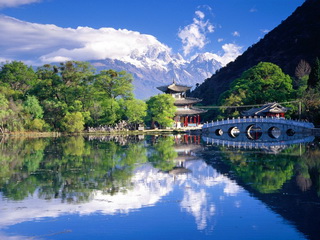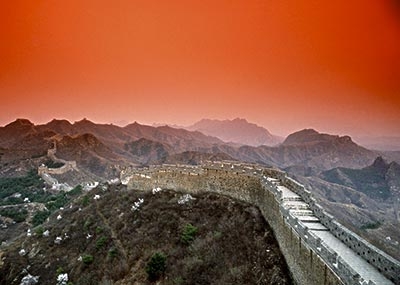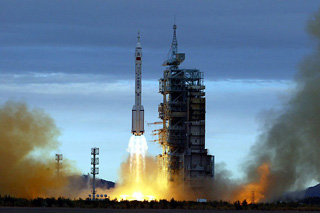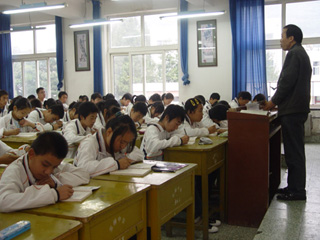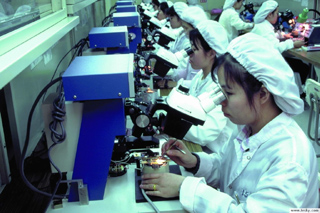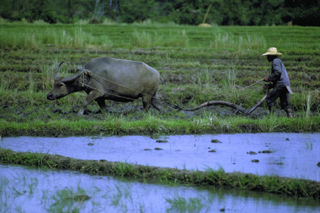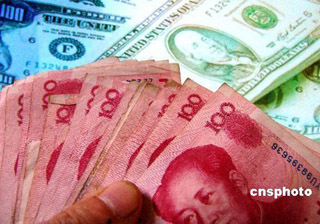
 China Tours
China Tours Tibet Tours
Tibet Tours China Theme Tours
China Theme Tours Off The Beaten Track
Off The Beaten Track Yangtze Cruises
Yangtze Cruises China Trip Planner
China Trip Planner Travel Agents
Travel Agents


We had a wonderful time in Tibet. We have learned a lot about this unique destination because of the wonderful guide Degyi who is so knowledge and always available towards our tours. We stayed at the Shangri-La Hotel Lhasa, and we would never imagine a Tibet travel could be so nice and amazing without the help of Degyi.
Also, thanks a lot to our Tibetan driver Mr.Wongdun for his safe driving and a good sense of service along the way.
We shall return Tibet in the near future!
P.B. and A. A - Europe
Tibet Travel
June 2018 (Private Tibet Journey from Kathmandu)

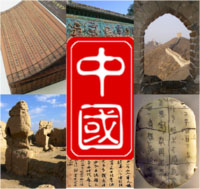
China Overview
Location of China
China is situated in eastern Asia on the western shore of the Pacific Ocean, with an area of 9.6 million square kilometers.
Geography of China
China's land drops off in escarpments eastward to the ocean, letting in humid air current and leading many rivers eastward. Among the rivers totaling 220,000 kilometers in length in China, the Yangtze River and Yellow River are the two longest.
From north to south, the territory of China measures some 5,500 km, stretching from the center of the Heilongjiang River north of the town of Mohe to the Zengmu Reef at the southernmost tip of the Nansha Islands. When north China is still covered with snow, people in south China are busy with spring plowing. From west to east, the nation extends about 5,200 km from the Pamirs to the confluence of the Heilongjiang and Wusuli rivers, with a time difference of over four hours. When the Pamirs are cloaked in night, the morning sun is shining brightly over east China.
China has land borders 22,800 km long, with 15 contiguous countries: Korea to the east; the People's Republic of Mongolia to the north; Russia to the northeast; Kazakhstan, Kirghizstan and Tajikistan to the northwest; Afghanistan, Pakistan, India, Nepal, Sikkim and Bhutan to the west and southwest; and Vietnam, Laos and Myanmar to the south. Across the seas to the east and southeast are the Republic of Korea, Japan, the Philippines, Brunei, Malaysia and Indonesia.
In the southwest is the Tibetan plateau, often referred to as the "roof of the world" as it averages 4,000m in altitude. To the North West are a series of highlands and basins, and to the East lowlands, which are subject to widespread flooding.
China has beautiful scenery, with mountains and ranges, highlands, plains, basins, and hills. The highlands and hill regions account for 65 percent of the country's total land mass, and there are more than 2,000 lakes. The highest mountain peak is Qomolangma (Mt. Everest) in Tibet, the highest in the world, 8,848 meters above sea level; the lowest point is the Turfan Basin in Xijiang, 154 meters below sea level.
China Weather and Climate
China is characterized by a continental climate. The latitude spans nearly 50 degrees. The greater part of the Chinese territory is situated in the Temperate Zone, its southern part in the tropical and subtropical zones, and its northern part near the Frigid Zone. Temperatures differ therefore rather strikingly across the country. The northern part of Heilongjiang Province has long winters but no summers; while the Hainan Island has long summers but no winters. The Huaihe River valley is marked by distinctive seasonal changes, but it is spring all year round in the south of the Yunnan - Guizhou Plateau. In the northwest hinterland, the temperature changes dramatically. China high tundra zone is situated in the Qinghai-Tibet, where the temperature is low in all four seasons. Some desert areas are dry all year round.
China population and Ethnic Groups in China
China is the world's most populous country, with 1.33 billion people as of 2008, about 22 percent of the world's total. This figure does not include many Chinese in the Hong Kong Special Administrative Region (HK SAR), Taiwan and Macao Special Administrative Region.
The national average density of population is 130 per square kilometer. This population, however, is unevenly distributed. Along the densely populated east coast there are more than 400 people per sq km; in the central areas, over 200; and in the sparsely populated plateaus in the west there are less than 10 people per sq km.
The population in cities and towns makes up 40 percent; and that in rural areas, 60 percent. The average life span of the Chinese population is 72.27 years, with the male at 68.71, and the female at 73.04.
China is made up of 56 ethnic groups. The Han people make up 91.02 percent of the total population, and the other 55 national minorities 8.98 percent. As the majority of the population is of the Han ethnic group, China's other ethnic groups are customarily referred to as the national minorities. They are Mongolian, Hui, Tibetan, Uygur, Miao, Yi, Zhuang, Bouyi, Korean, Manchu, Dong, Yao, Bai, Tujia, Hani, Kazak, Dai, Li, Lisu, Wa, She, Gaoshan, Lahu, Shui, Dongxiang, Naxi, Jingpo, Kirgiz, Tu, Daur, Mulam, Qiang, Blang, Salar, Maonan, Gelo, Xibe, Achang, Pumi, Tajik, Nu, Ozbek, Russian, Ewenki, Benglong, Bonan, Yugur, Jing, Tatar, Drung, Oroqen, Hezhen, Moinba, Lhoba and Gelo.
The Han Chinese can be found throughout the country, though mainly on the middle and lower reaches of the Yellow River, the Yangtze River and the Pearl River valleys, and the Northeast Plain. The national minorities, though fewer in number, are also scattered over a vast area that can be found in approximately 64.3 percent of China, mainly distributed in the border regions from northeast China to north, northwest and southwest China. Yunnan Province, home to more than 20 ethnic groups, has the greatest diversity of minority peoples in China. In most of China's cities and county towns, two or more ethnic groups live together. Taking shape over China's long history, this circumstance of different ethnic groups "living together in one area while still living in individual compact communities in special areas" continues to provide the practical basis for political, economic and cultural intercourse between the Han and the various minority peoples, and for the functioning of the autonomous national minority areas system.
Capital of China and Administrative Division
The capital of China is Beijing, a modern and ancient city in north China. Serving as the country's capital for more than 800 years, Beijing is home to some of China's best sightseeing and culture relics such as the Great Wall of China, the Forbidden City, the Summer Palace and the Temple of Heaven etc. Beijing has a population of 17.55 million as of 2009.
China's administrative units are currently based on a three-level system dividing the nation into provinces, counties, and townships. The country is divided into provinces, autonomous regions, and municipalities directly under the Central Government. At present, China was divided into 23 provinces, 5 autonomous regions, 4 municipalities directly under the Central Government, and 2 special administrative regions.
Languages in China
The national language is Putonghua (the common speech) or Mandarin, which is one of the five working languages at the United Nations. Mandarin, the cream of the crop, is called "Huayu" while in Singapore and Malaysia, and called "Guoyu" in Hong Kong and Taiwan. Most of the 55 minority nationalities have their own languages and some 30 of them have their own written languages. There are seven major Chinese dialects and many sub dialects. Mandarin (or Putonghua), the predominant dialect, is spoken by over 70% of the population. It is taught in all schools and is the medium of government. Non-Chinese languages spoken widely by ethnic minorities include Mongolian, Tibetan, Uygur and other Turkic languages (in Xinjiang), and Korean (in the northeast). Cantonese is one of the local dialects of southern China. As a written language, Chinese has been used for 5,000 years.
Religions in China
China is a country with great diversity of religions, with over 100 million followers of various faiths. Buddhism, Taoism, Islam, and China's indigenous Taoism are the four major religions. Catholicism and Protestantism have smaller but substantial followers too. Different ethnic groups usually follow different religions. Islam is followed by the Hui, Uygur, Kazak, Kirgiz, Tatar, Dongxiang, Salar and Bonan peoples; Buddhism and Lamaism are followed by the Tibetan, Mongolian, Dai and Yugur nationalities; Christianity is followed by the Miao, Yao and Yi nationalities; Shamanism is followed by the Oroqen, Ewenki and Daur nationalities; and the majority Han nationality believes in Buddhism, Taoism and Christianity.

Modern tourism in China sprang up in the early 1950s. In 1954, the China International Travel Service was established, with 14 branches in Guangzhou, Shanghai, Beijing and other major cities. In 1964, the State Tourism Administration of China was formally established. Since the initiation of the policies of reform and opening to the outside world in 1978, China's tourism has entered a stage of rapid development. In 1999, the number of tourists entering China reached 72.8 million, of which 8.43 million were foreign tourists, 40 times the figure for 1978. Consequently, the foreign exchange income from this industry reached US$14.1 billion, 54 times that of 1978.
Chinese medicine and pharmacology are important component parts of China's splendid national culture. Chinese medicine and pharmacology have made tremendous contributions to China's prosperity throughout the country's history of several thousand years. They are noted worldwide for their outstanding curative effects, strong national character, unique method of diagnosis and treatment, systemic theories and vast accumulation of historical records and materials, making it common wealth of the medical treasure-house of mankind. Chinese medicine and pharmacology have shown great vitality for several thousand years. They are also a valuable complement to the modern techniques of medicine and pharmacology.
The origin of traditional Chinese medicine and pharmacology can be traced back to primitive society. Medicine was originally created in the struggle against Nature by the ancient Chinese. In the course of food gathering, they found that some food items could alleviate the symptoms of or cure diseases. That was the origin of TCM. When the ancient Chinese lit fires to warm themselves, they also found that heated stones and sand wrapped in animal skin or bark could reduce pain. Through repeated practice and improvement, moxibustion methods were gradually developed. In the process of using stone instruments they found that when a part of the body was hit by something, pain in some other part of the body might be relieved, and so stone or bone acupuncture needles were invented. After a long period of development, the theory of collateral channels took shape, and the technique of acupuncture treatment was perfected.
China, one of the four oldest civilizations in the world, has a written history of 4,000 years and boasts rich cultural relics and historical sites. It is the inventor of compass, paper, gunpowder and printing. The Great Wall, the Grand Canal and the Karez irrigation systems are three great ancient engineering projects built 2,000 years ago. Now they are the symbols of the rich culture heritage of the Chinese nation. When the Chinese refer to their history, they might be speaking of times that are already legendary.
Traditional sports with distinct Chinese characteristics are also very popular, including martial arts, taijiquan or shadow boxing, qigong (a system of deep breathing exercises), Chinese chess and weiqi encirclement chess. Taijiquan is a kind of Chinese boxing, combining control of breath, mind and body. It emphasizes body movement following mind movements, tempering toughness with gentleness and graceful carriage. Qigong is a unique Chinese way of keeping fit. It aims at enhancing health, prolonging life, curing illness and improving physiological functions by concentrating the mind and regulating the breath. There are various entertaining and competitive sports activities in the minority-inhabited areas, for example, wrestling and horsemanship among Mongols, Uygurs and Kazaks; Tibetan yak racing; ethnic Korean "seesaw jumping"; crossbow archery among the Miao, and dragon-boat racing among the ethnic Dai ethnic minority.
Environmental protection has been a basic national policy since the 1980s. The State Environmental Protection Committee of China was established in 1984 and the first Environmental Protection Law formally issued in 1989. After the United Nations Conference on Environment and Development in 1992, China was one of the first countries to formulate and carry out a strategy of sustainable development. In 1993, the Environmental Resources Committee of the NPC was set up. So far, the state has promulgated eight laws for environmental protection, 14 laws for management of natural resources and 35 regulations on environmental protection. Environmental protection authorities have publicized over 100 national environmental protection regulations and more than 1,000 local ones.
Responding to stresses on natural resources caused by fast economic growth, development and urbanization, the state at the turn of the 21st century responded with a "green strategy" that includes developing a revolving economy, increasing resource-use efficiency; developing clean production, reducing pollution cost in production processes; developing green consumption, reducing ecological impact of consumption; developing new energy resources, reforming production methods, moving toward ecological industrial civilization, and creating a balanced ecological environment.
In 1900, China had no modern science and technology at all - fewer than 10 people in all of China understood calculus. Now, in the early 21st century, the gap in high-technology research and development between China and the world's advanced countries has visibly shrunk; 60 percent of technologies, including atomic energy, space, high-energy physics, biology, computer and information technology, have reached or are close to the world advanced level. On October 15, 2003, the successful launch of the "Shenzhou V" manned spacecraft made China the third country to master manned spaceflight technology. According to the Moon Probe Project started in February 2004, China will launch unmanned probes to the moon before 2010, and gather moon soil samples before 2020.
Since 1950 China has provided nine-year compulsory education for a fifth of the world's population. Nine-year compulsory education operates in 90 percent of China's populated areas, and illiteracy in the young and mid-aged population has fallen from over 80 percent down to five percent. The system trained some 60 million mid- or high-level professionals and near 400 million laborers to junior or senior high school level. Today, 250 million Chinese get three levels of school education, (elementary, junior and senior high school) doubling the rate of increase in the rest of the world during the same period. Net elementary school enrolment has reached 98.9 percent, and the gross enrollment rate in junior high schools 94.1 percent.
After decades of chaos and wars, China's industry had very little to start with before 1949. Most finished industrial products were imported at that time. After the founding of New China in 1949, the Chinese government started construction on a large and planned scale. As a result, the country's industrial foundation has been strengthened and its production level raised rapidly. The metallurgical, mining and energy industries, airplane and automobile industries, and the new industries, including petrochemicals, computers, telecommunication equipment, instruments and meters, and aeronautics have been built up from nothing.
China is a country with a large population but less arable land. With only 7 percent of the world's cultivated land, China has to feed one fifth of the world's population. Therefore, China's agriculture is an important issue and draws wide attention of the world.
Since China's economic reform and opening-up, the economy develops rapidly, being the second largest economy entity in the world only next to the US, with a GDP of over $ 7 trillion (2007) when measured on a purchasing power parity (PPP) basis. China's economy shows a fast-growing prospect.
China Trip Planner | Travel Agents | About Us | Why Us | Contact Us | How to Pay | How to Book - Terms & Conditions | Site Map
Copyright © 2010 - 2030 All Rights Reserved.


 0086-28-85711328
0086-28-85711328 0086-28-85546015
0086-28-85546015




